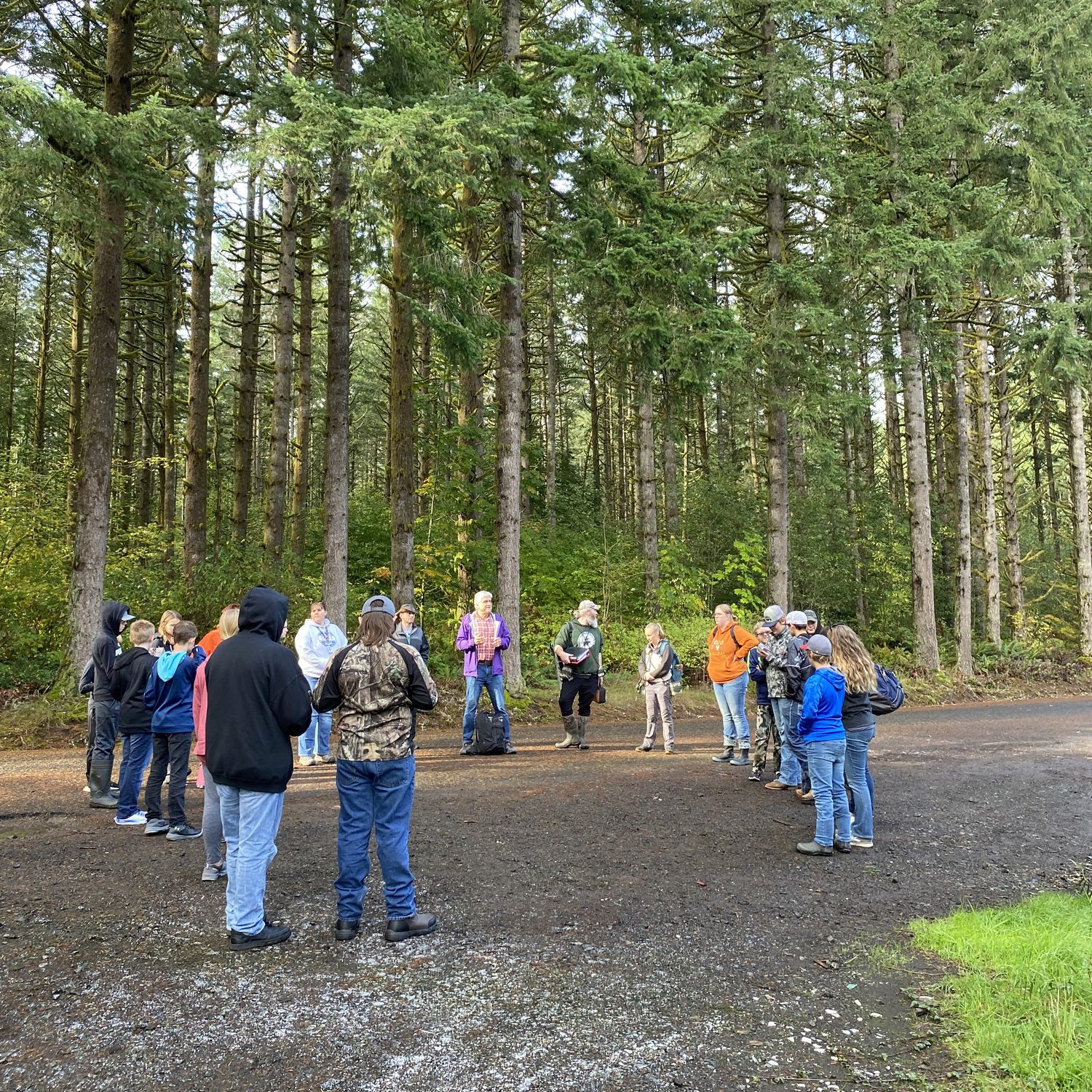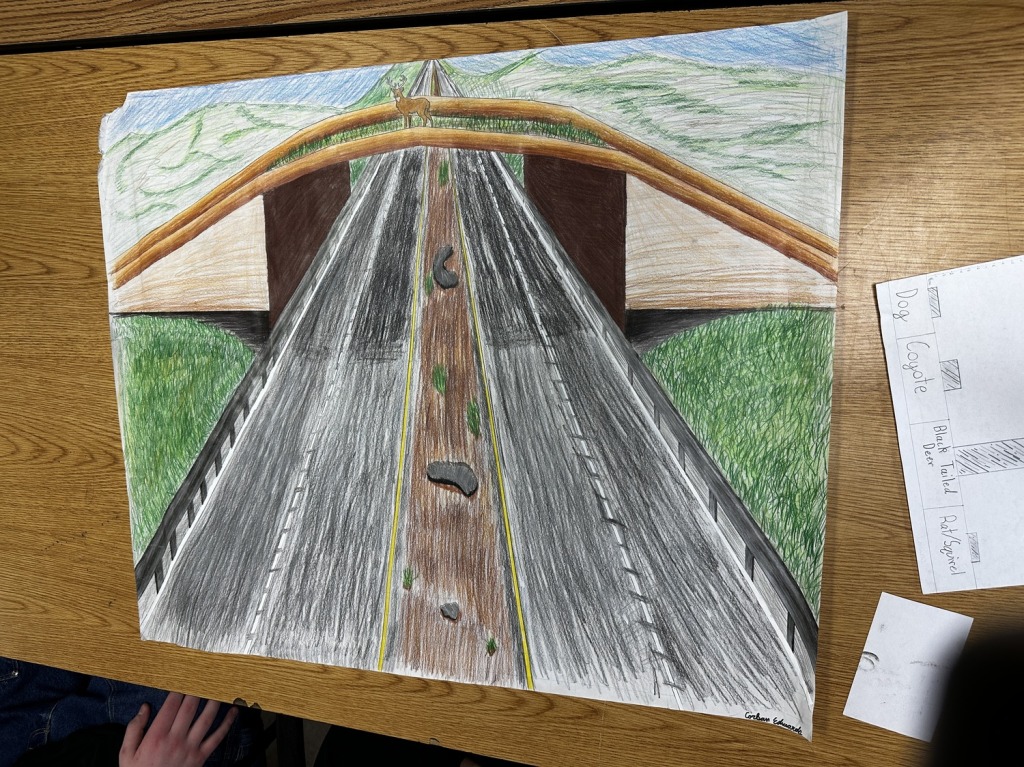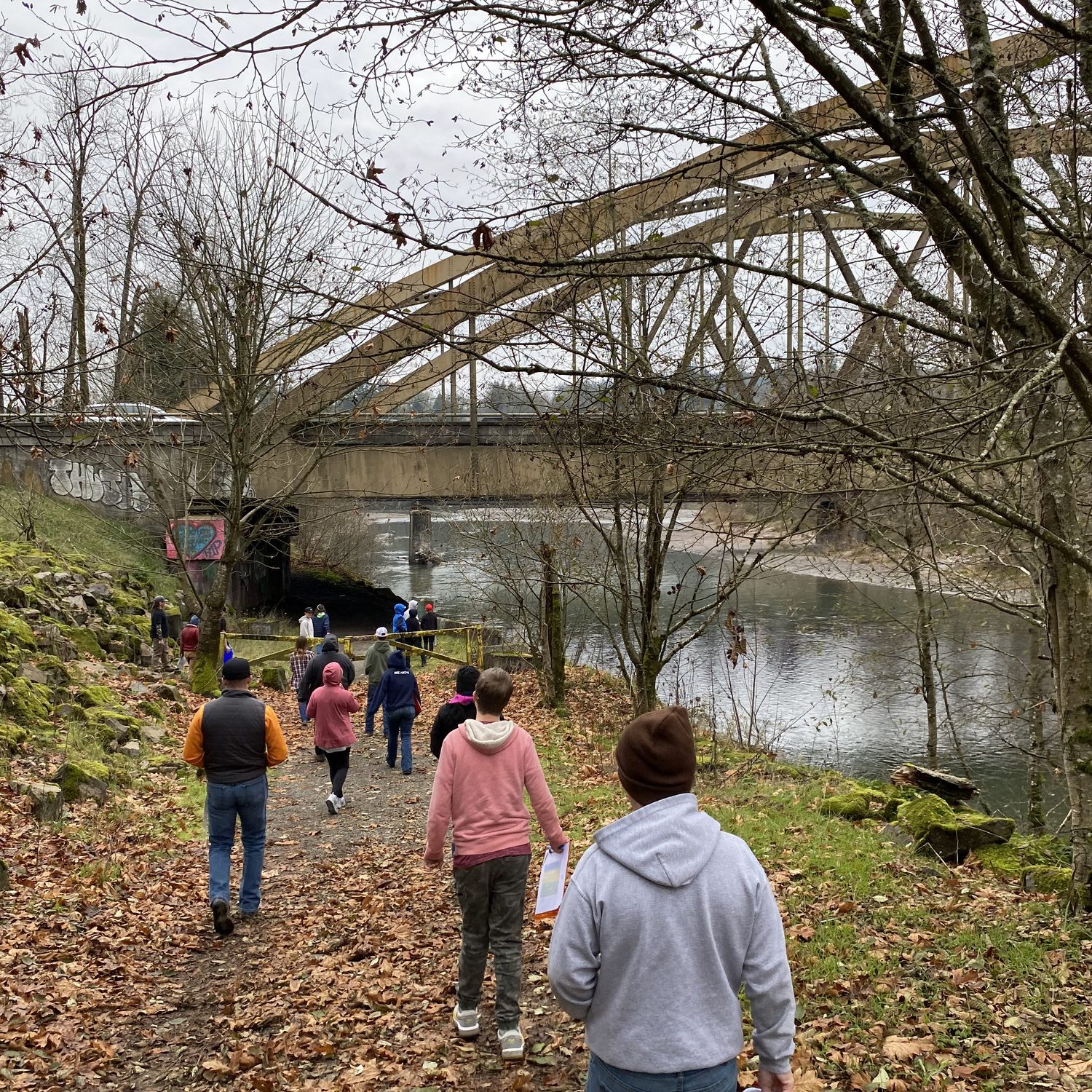
It’s a Monday afternoon in late January 2024. Bailee Perleberg’s classroom at Toutle Lake Middle School is abuzz with nervous energy as students put final touches on presentations and finish illustrating their wildlife crossing designs.
The students are about to share their final projects with a panel of experts including Glen Kalisz and Anna Arensmeyer from the Washington State Department of Transportation (WSDOT), Brian Stewart from Conservation Northwest, Fraser Shilling from UC Davis, and Clare Sobetski from the Washington State Department of Natural Resources (DNR).
The students have spent the first part of the 2023-2024 academic year participating in a research project to identify the best location and design for a wildlife crossing over or under Interstate 5. The classroom projects are inspired by the ongoing work of the Washington Wildlife Habitat Connectivity Working Group. Comprised of government, nonprofit, tribal, and academic partners, the group is working to identify undeveloped areas along I-5 that are heavily trafficked by wildlife.
The southern linkage, a priority area of study near the Cowlitz and Toutle rivers, is only 20 minutes by bus from Toutle Lake Middle School. This makes it an ideal location to bring students out for hands-on educational activities associated with ongoing research. Including students in the research was a priority for Shilling, a professor at UC Davis and a lead researcher on the project.
“Including students in environmental research like the I-5 Wildlife Connectivity Project helps empower them to make a difference,” Shilling said. “It helps them understand the problems that wildlife face as they move through the landscapes around us … For their families and communities, student inclusion in research helps demystify the scientific process, reducing barriers and making scientific knowledge accessible to more people.”

The multi-partner collaboration with Toutle Lake Middle School is an ideal example of project-based learning DNR looks to support with its Youth Education and Outreach Program (YEOP). Connecting Washington students with natural resource professionals for outdoor, educational activities related to authentic land management needs is a growing point of emphasis for the agency.
Quality project-based learning starts with a great launch event. For these students, that event took place in October of 2023 when students met with professionals on DNR-managed land to learn about the research project, install their own wildlife cameras, and practice identifying animal signs like tracks and scat.
The students impressed the professionals by demonstrating how much they already knew about local wildlife and how quickly they could interpret camera images. The four cameras the students installed during the field trip weren’t just for show – they are part of the larger, ongoing research project.
They returned to the site about six weeks later to retrieve the memory cards from their cameras and learn how to translate images into a data sheet for analysis. There was a good deal of enthusiasm as students pulled up the images on tablets to see what exciting wildlife their cameras captured.
“Of the four cameras installed by the students, one documented an elk, which was only the second camera of over 40 in the study area to do so,” said WSDOT Habitat Connectivity Biologist Glenn Kalisz. “Another camera documented a cougar, which was the second cougar documented west of I-5 out of over 20 cameras and many monitoring days. We’re getting good data out of it!”
As part of this second field experience, students also toured infrastructure that local wildlife is currently using to traverse I-5, including the underpass at the Toutle River bridge. This information informed their final presentations, as all students chose an overpass design because of the drawbacks of a dark and loud underpass.

Students who participated in this hands-on learning module were all enrolled in Perleberg’s natural resources class at the middle school. The class is part of the school’s Career and Technical Education offerings. Perleberg designed curriculum and facilitated classroom learning about local wildlife species, population dynamics, and human impacts to support the outdoor experience. Perleberg also worked with YEOP staff to develop a plan for students to deliver final presentations to project partners before the end of the semester.
Presentation groups sorted by the four cameras installed by the students created slides addressing three key topics: why a wildlife crossing on I-5 is necessary; what the data from their wildlife camera revealed and what limitations the data carried; how the data students gathered should inform the design of a wildlife crossing. Each group was responsible for the creation of charts and graphs to visualize their data, as well as an artistic rendering of a wildlife crossing.
A prolonged snow and ice storm in January threw a wrench into the project timeline, but the students pushed through to finish their work in time for final presentations. All the partner organizations agreed the multi-pronged effort was a roaring success.
“I saw the students light up,” Perleberg said. “They were excited to have an experience outside and to participate in hands-on learning. As a teacher, I am trying to create functional members of society. In this project, my students had a chance to learn about things that matter to their community and that have real-life applications.”
This initial collaboration went so well, in fact, that all of the partners committed to a second iteration this spring for students in Perleberg’s second semester natural resources class. That project will adopt a similar structure but include more resources for students to learn about considerations in wildlife crossing design and more data analysis of the tracks and scat they observe.
“I hope these field trips inspire the students to get outside and start making observations about wildlife,” Arensmeyer said. “Engaging students in this manner can also be beneficial for kids that don’t thrive in a traditional classroom setting and provides them with a learning experience that might be more conducive to their learning style.”